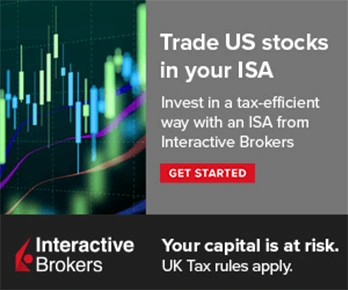
Image source: Getty Images
Using a Stocks and Shares ISA to save for retirement is a common strategy used by many British investors. Unfortunately, a lot of them only realise they need to start planning for retirement after 40. Some think this is too late but, as the saying goes, “better late than never!“
The benefit of investing with an ISA is the generous tax breaks it provides. Investors can put in up to £20,000 every year with no tax levied on the capital gains. When thinking in terms of 20 years or more, that’s a lot of savings!
Please note that tax treatment depends on the individual circumstances of each client and may be subject to change in future. The content in this article is provided for information purposes only. It is not intended to be, neither does it constitute, any form of tax advice. Readers are responsible for carrying out their own due diligence and for obtaining professional advice before making any investment decisions.
Considerations
Unlike a Cash ISA, it’s important to note that a Stocks and Shares ISA doesn’t guarantee any returns. It’s self-directed, so any returns depend on the assets the account holder picks. Besides the risk of picking bad stocks, economic downturns or recessions can also result in losses.
However, it does have the potential to achieve far higher returns than the usual 3-4% of a Cash ISA. Many investors achieve upwards of 10% a year by carefully selecting the perfect mix of stocks.
Even if it achieves only the FTSE 100 average return of 6.3%, it would outperform a Cash ISA. It’s not unrealistic to expect an average annual return of 8% from a decent portfolio of growth and dividend shares.
By investing just £300 a month into such a portfolio, it could grow to £287,209 in 25 years. That amount would do great in a portfolio of high-yield income shares, which could pay out up to £20,000 in dividends every year!
Stocks to pick?
When starting out, it’s best to err on the side of caution and pick a few ‘starter stocks’. Some examples for investors to consider include Marks and Spencer, Tesco and Reckitt Benckiser (LSE: RKT). These are all large, well-established businesses selling brands that are consistently in high demand. This helps them maintain steady revenue streams even when the economy slips and money is tight.
For example, Reckitt has a large portfolio of trusted brands such as Dettol, Nurofen and Durex. Sales of popular products like these ensure it enjoys steady cash flow and can maintain dividend payments.
Since 2010, it’s increased its dividend at a rate of 4.8% a year, up from 115p per share to 202p. It managed this despite posting a loss in 2021 and struggling to meet expectations for the following two years.
However, popular brands and high sales don’t make it immune to challenges. The stock price is down 23% in the past five years, largely due to a lawsuit regarding its Enfamil baby formula. The issue’s now resolved, but such legal challenges are an ever-present risk to retailers of nutrition and medical products.
Fortunately, recovery has been swift, with the share price up 15% in the past year. This is indicative of the company’s defensive qualities, so it’s worth considering for long-term growth and dividends.
Most investors opt for a diversified portfolio of 10-20 stocks, including a mix of growth and income shares from various sectors and regions. This helps protect against industry- or country-specific risks. It can also help to adopt a dividend reinvestment plan (DRIP), thereby compounding returns and optimising growth.






